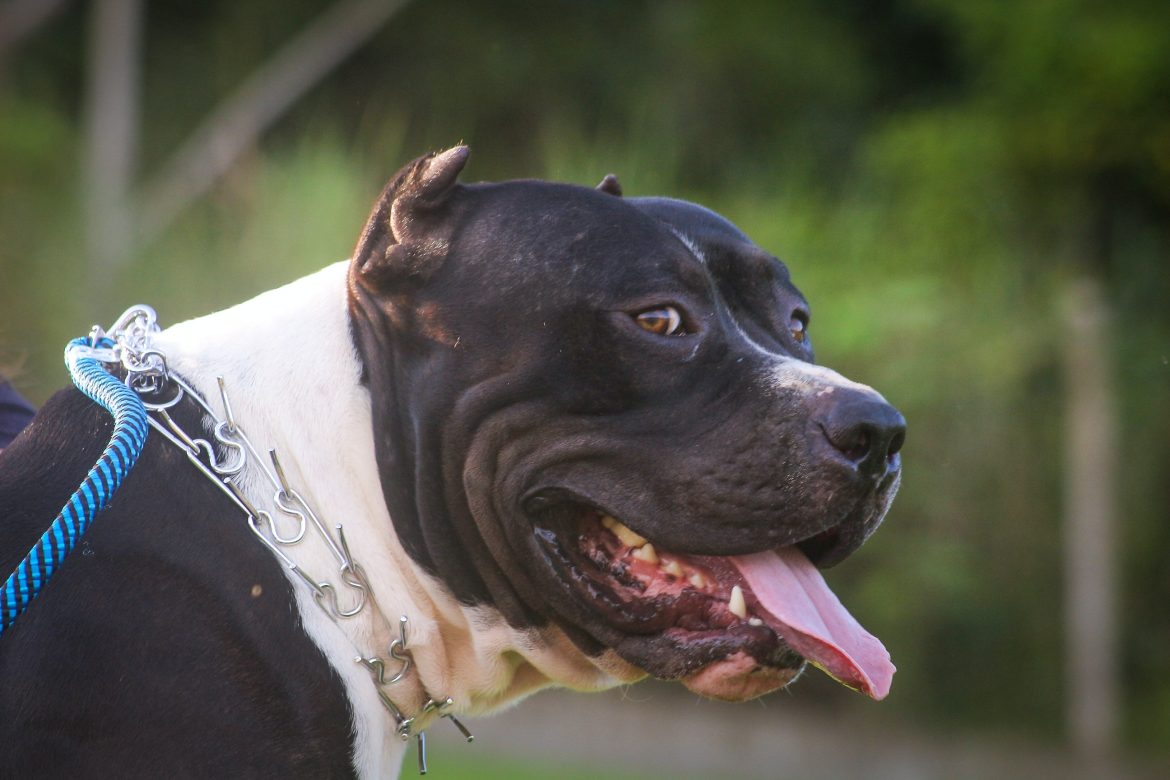Pitbulls are one of the strongest large dog breeds on earth. But like all things old, their strength, energy, and drive diminishes and give way to common physiological issues facing senior dogs. If you are thinking of adopting a pittie, then knowing the common pitbull health issues is part and parcel to maintain a good lifestyle for your newfound furry friend.
What are the common pitbull health issues?
Most of the known pitbull health issues stem from genetic defects in the breed’s bloodline. So when considering pitbull puppies for sale, we often insist on adopting a pitbull puppy from an established pitbull breeder. Doing so helps you avert most of these common pitbull health concerns caused by bloodline defects.
Here is a list of common pitbull health problems and tips on how you can manage them.
Skin conditions
There are various kinds of pitbull skin problems that can affect your fur baby. One such issue to be aware of is environmental allergies. Environmental allergens can cause atopic dermatitis in your pitbull. It leads to symptoms such as itching, scratching, and excessive licking. Too much friction on the skin due to scratching can cause lesions that trigger hair loss in Pitbulls.
You can take care of environmental allergies by grooming your pitbull regularly. Pitbulls have short hair which makes them easy to groom. Brushing the coat once or twice a week helps remove dirt, matted hair, and tangles. A good dog brush will lift off any allergens on the dog’s coat that are causing skin irritation or sneezing allergies.
While grooming your pitbull dog, also check for any lesions or unusual bumps on the skin. Skin tumors are the most diagnosed type of cancer in all dogs including Pitbulls. When the dog’s skin is constantly exposed to environmental triggers like excessive sun, chemicals, hormonal anomalies, and viruses.
Common types of skin cancers in Pitbulls include fibrosarcoma, mast cell tumor, histiocytic cell tumor, squamous carcinoma, and malignant melanoma.
Fibrosarcoma tumors
Fibrosarcoma tumors affect the connective tissues of the skin. They are harmless and do not grow as much. Also, fibrosarcoma tumors do not metastasize and rarely recur when surgically removed. These types of tumors affect dogs of middle age or older.
Mast cell tumors
Mast cell tumors are a problematic type of tumor in American bully dogs. They can appear on the skin or affect internal organs. Mast cell tumors release histamine which irritates the skin and causes itching. Histamine released on internal organs can cause more severe issues like stomach ulcers. Mast cell tumors commonly target the lower abdomen, limbs, and chest. These types of tumors are common in pit bulls aged 8 to 10 years.
Histiocytic cell tumors
Histiocytic cell tumors occur when the histiocytic cells in a dog’s body become malignant. These types of tumors occur in three forms- histiocytoma, systemic histiocytosis, and malignant histiocytosis. Histiocytomas are more common in pitbull dogs although they are not a threat to the dog’s health.
Squamous carcinoma
Squamous carcinoma is common in older pit bull dogs. This type of tumor affects areas that are least protected by hair such as the lower legs, rear, abdomen, and parts of the head. Vet doctors believe that squamous carcinoma tumors are triggered by excessive exposure to sunlight. The papillomavirus could also cause this type of cancer also there is no concrete scientific proof to this claim.
Malignant melanoma
These can be benign or malignant. They appear as dark raised pigment on the skin although discoloration may not be evident in some cases. Malignant melanoma usually affects the lips, mouth, and nails. You may also catch them around the head and under the belly.
There is no preventive measure for tumors. However, you can minimize the risk of your pitbull dog developing tumors by ensuring you adopt a pitbull puppy for sale from an experienced breeder. Seasoned pitbull breeders take the time to breed and perfect their pitbull bloodlines. They breed out unwanted traits like behavioral problems and pitbull health issues. Also, they breed in desirable traits like calmness, intelligence, and high alertness.
Check the health history of the pitbull puppies for sale to ensure they come from healthy parents with few health problems.
Ichthyosis
This is another common skin disease in Pitbulls that is congenital. The dermis layer of skin on the coat and paws thickens and becomes painful if untreated. Ichthyosis is a hereditary disease and affects most terrier breeds too. Again, we insist you check the health history of the pitbull puppy before adopting.
Joint issues in Pitbulls
Pitbulls are by nature very active dogs. The constant pressure on joints eventually causes joint problems in the long run. Joint problems in Pitbulls usually occur around the hip and knee.
Hip dysplasia
Hip dysplasia is rampant in large dog breeds, especially in the American Staffordshire Terrier. Since most pitbull bloodlines descend from the Staffordshire terrier, it is safe to say that hip dysplasia can be a likely issue when your pitbull puppy grows older.
This condition occurs when the hip does not form correctly before birth. An improperly formed hip ends up affecting the mobility of the dog as it grows. A pitbull dog with hip dysplasia will have difficulty running or climbing high points.
A homemade remedy for hip dysplasia is slowing down activity as your dog ages. Old dogs have a low muscle mass and bone mineral density. Excess activity can put too much strain on their joints which may be the onset of hip dysplasia.
Knee joint problems
Another joint problem in Pitbulls is the knees. A lot of play or getting into strenuous workouts puts a strain on the knees. Dogs with excess body weight, like the XL American bully, put a lot of pressure on their joints when doing vigorous activities. If physical activity is not regulated, it can lead to ligament tears, leg injuries, and knee joint injuries.
The cranial cruciate ligament is the most affected tissue in pitbull knee joint problems. This ligament connects the thigh bone and tibia and any partial tear to it can escalate to serious levels. A partial ligament tear will manifest through a painful limp.
Immediate surgery is necessary to fix ligament tears. If no medical attention is given, the tears worsen and affect the dog’s mobility. A severely damaged cranial cruciate ligament causes the dog to limp on one leg putting more pressure on the healthy leg. The increased weight on the healthy knee can lead to ligament tears in that knee, and this can completely impair a dog’s mobility.
Allergies
As we mentioned, Pitbulls are prone to environmental allergies that affect their skin. Common pitbull allergy triggers are pollen, grass, and parasites (ticks and flies). Some pitbull dogs suffer from food allergies too, especially grain and wheat allergies.
Common allergic symptoms in Pitbulls to watch out for include scratching, drooling, licking, and abnormal shedding. Treat allergies immediately by rushing your pitbull dog to a vet. A professional vet will identify the allergy triggers and prescribe medication that will treat and/or alleviate the symptoms. Pitbull skin allergies or infections should be treated immediately to avoid excessive hair loss.
Hypothyroidism
The thyroid gland releases hormones that help in regulating digestion, heart function, and muscle function. When the thyroid gland malfunctions, a Pitbull dog will have problems maintaining healthy weight and muscles. Hypothyroidism may also cause some Pitbulls to become fearful or aggressive. Some pitbull skin problems may also stem from hypothyroidism disease.
The only cure for hypothyroidism is a dose of thyroxine administered throughout the dog’s life. Thyroxine is a thyroid hormone replacement therapy for dogs with the condition. Also, you may have to change the dog’s diet to manage the disease better.
First, put your dog on a sugar-free and gluten-free diet. Secondly, you have to supplement your dog’s nutrition intake for the vitamins and minerals that get depleted when the thyroid gland malfunctions. Feed your dog foods rich in vitamin B, Selenium, and probiotics.
If getting the nutrition right is a problem, you could always opt for pet supplements like Bullyade 4-in-1 soft chews that have all the necessary vitamins and minerals for dogs, including probiotics.
Gut problems
Always monitor your dog’s gut health. Pitbulls are prone to a digestive disease known as gastric dilatation-volvulus. This is when excess gas buildup causes the stomach to overstretch triggering discomfort in the dog. Symptoms of gastric dilation include excess gas after eating, an enlarged tummy, and canine anxiety. Fermented foods and ‘air eating’ tend to worsen the condition.
Immediate surgery helps correct gastric dilatation-volvulus in Pitbulls. This disease is fatal if not treated early, so rush your pitbull dog to a vet when you notice the mentioned symptoms.
Eye problems
An eye problem to look out for in Pitbulls is cataracts. A pitbull puppy can inherit the condition from its parents or it can develop as a symptom of other underlying diseases. Fibers and proteins that make up the lens of the eye begin to break down and cause vision problems. Cataracts form slowly over time which is why they manifest when the pitbull dog is in its senior years.
The only cure for cataracts is surgery to correct the anomaly. Most American bully dogs will regain their vision after a successful surgery with few cases of complications developing.
Finally
These are the common pitbull health issues you need to be aware of while considering pitbull puppy adoption. As a rule of thumb, always get your pitbull puppies from the best American bully breeders who know about their bloodline’s health history. It saves you the pain of having your family vet on speed dial in the long run. Also, we recommend our article on how to prolong your pitbull’s lifespan through healthy living to increase your knowledge on pitbull health.
I am a highly skilled content writer and SEO expert with a passion for helping small businesses succeed in the digital world. With my extensive knowledge of the latest SEO techniques and strategies, I have successfully assisted numerous clients in improving their website rankings, generating more leads, and driving a significant increase in website traffic.
As a professional content writer and SEO expert, I am confident in my ability to contribute significantly to the success of small businesses. If you are seeking a results-driven, highly skilled digital marketer who can help you increase your ranking, convert new leads, and see a substantial improvement in website traffic, I would welcome the opportunity to collaborate with you.
Website: https://manmadewebsites.com/
Email: hello@digitalmarketingchap.com

